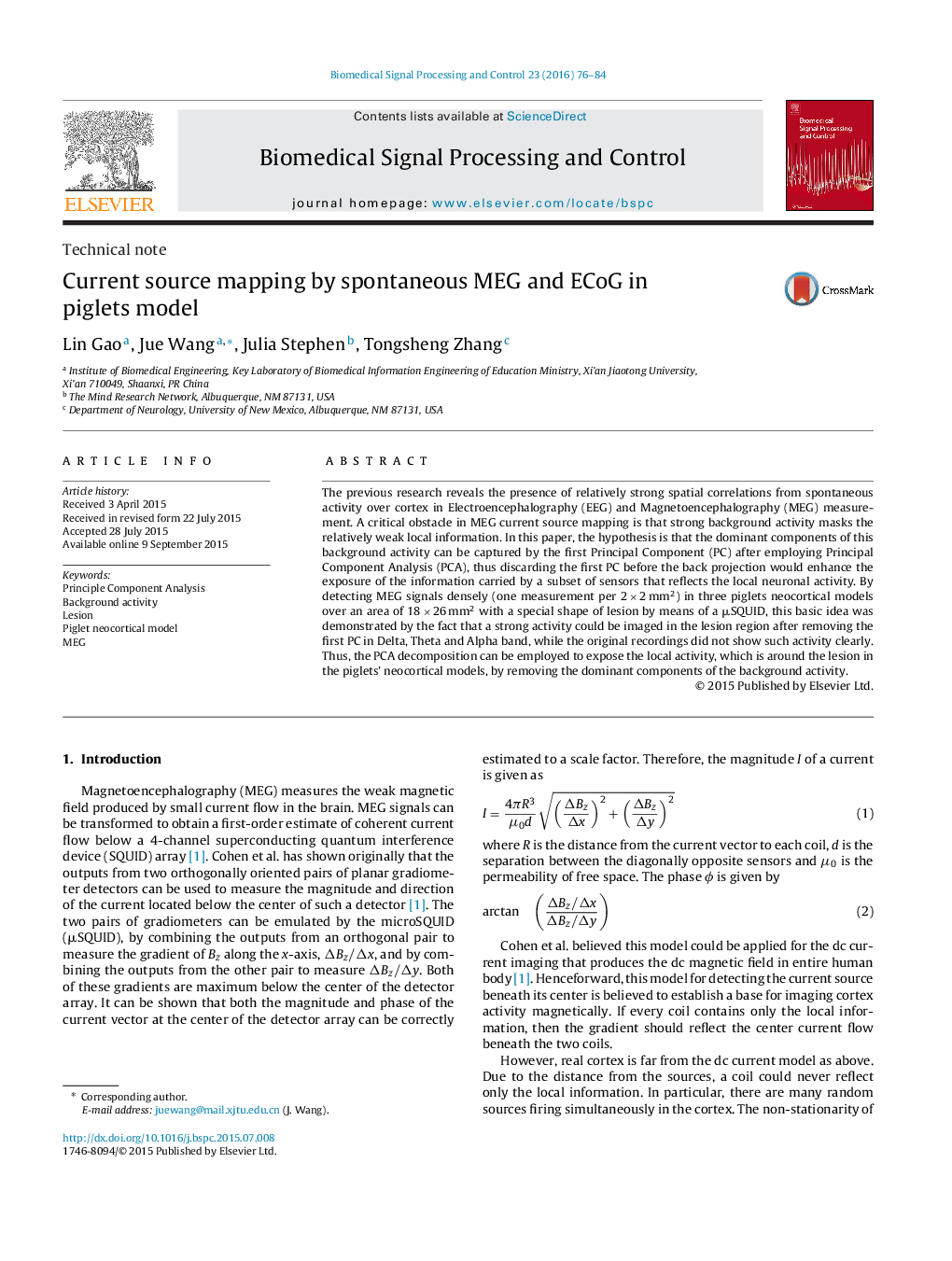| Article ID | Journal | Published Year | Pages | File Type |
|---|---|---|---|---|
| 558062 | Biomedical Signal Processing and Control | 2016 | 9 Pages |
.•The study proposed a novel way to remove the background signal by normalized PCA decomposition.•The PCA was employed oppositely to increase the local information.•Compared with the Gradient method, the normalized PCA decomposition can be used to locate the lesion in cortex, since the real cortex is far less-than-ideal model.
The previous research reveals the presence of relatively strong spatial correlations from spontaneous activity over cortex in Electroencephalography (EEG) and Magnetoencephalography (MEG) measurement. A critical obstacle in MEG current source mapping is that strong background activity masks the relatively weak local information. In this paper, the hypothesis is that the dominant components of this background activity can be captured by the first Principal Component (PC) after employing Principal Component Analysis (PCA), thus discarding the first PC before the back projection would enhance the exposure of the information carried by a subset of sensors that reflects the local neuronal activity. By detecting MEG signals densely (one measurement per 2 × 2 mm2) in three piglets neocortical models over an area of 18 × 26 mm2 with a special shape of lesion by means of a μSQUID, this basic idea was demonstrated by the fact that a strong activity could be imaged in the lesion region after removing the first PC in Delta, Theta and Alpha band, while the original recordings did not show such activity clearly. Thus, the PCA decomposition can be employed to expose the local activity, which is around the lesion in the piglets’ neocortical models, by removing the dominant components of the background activity.
